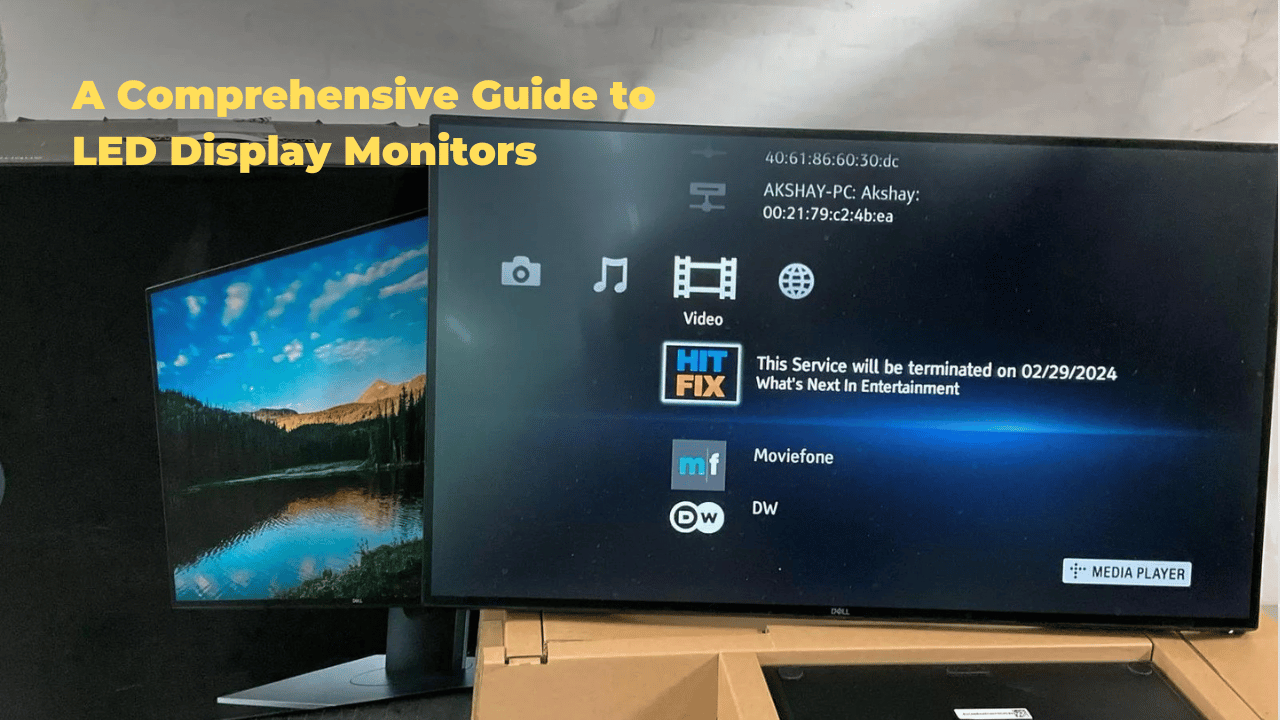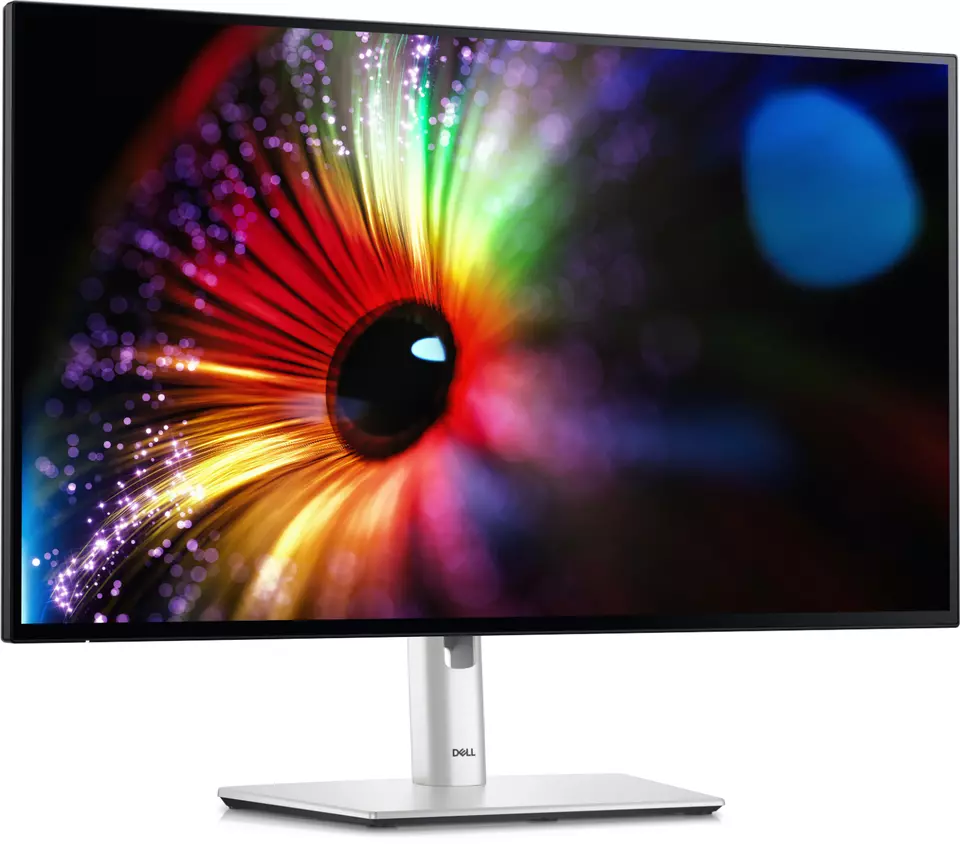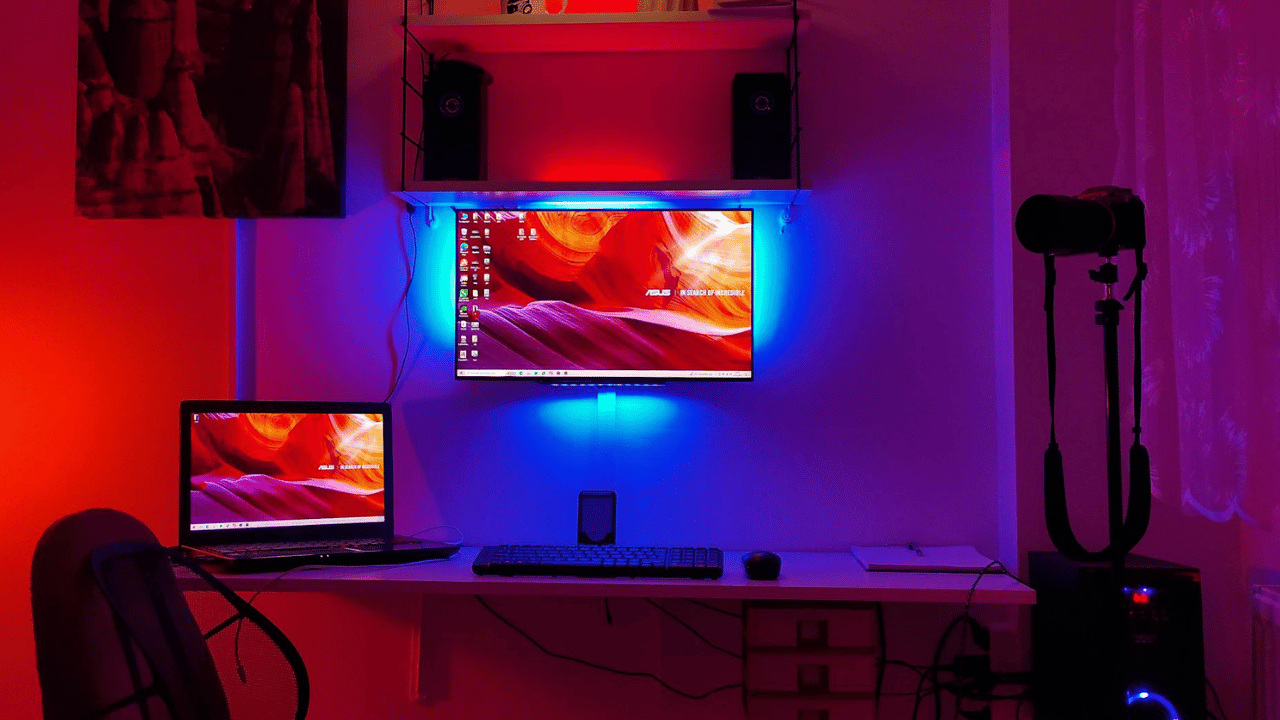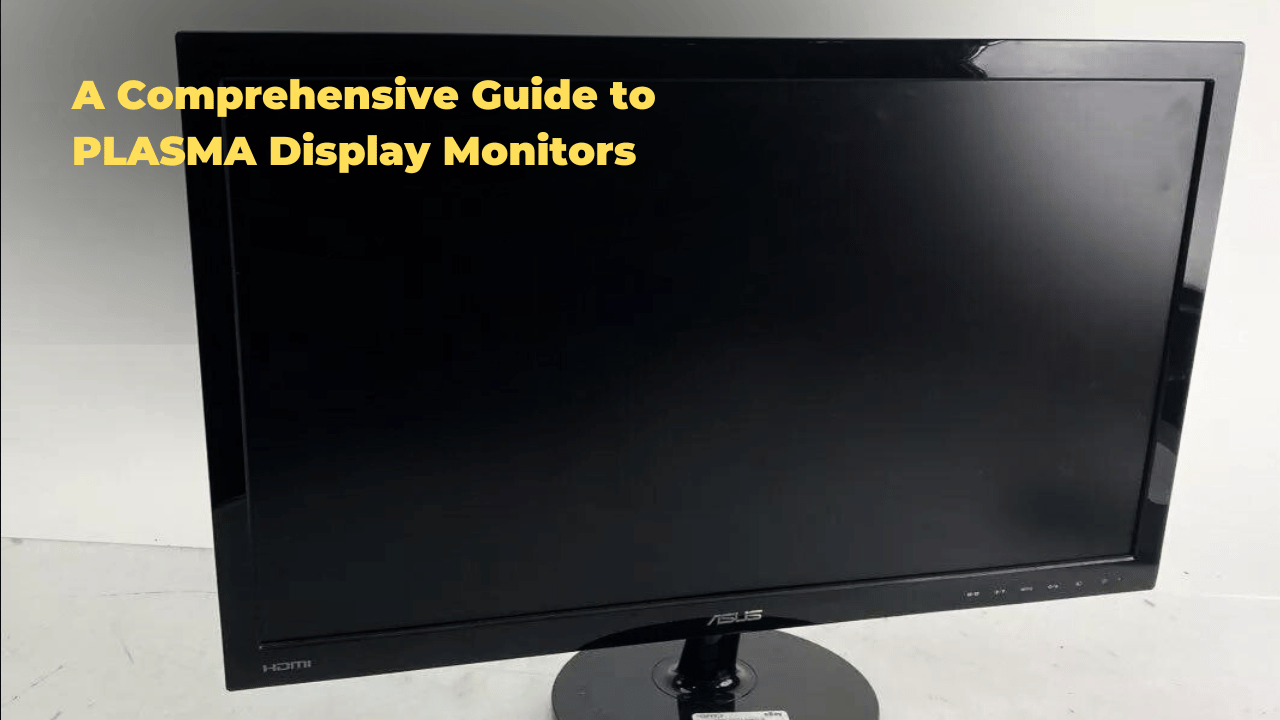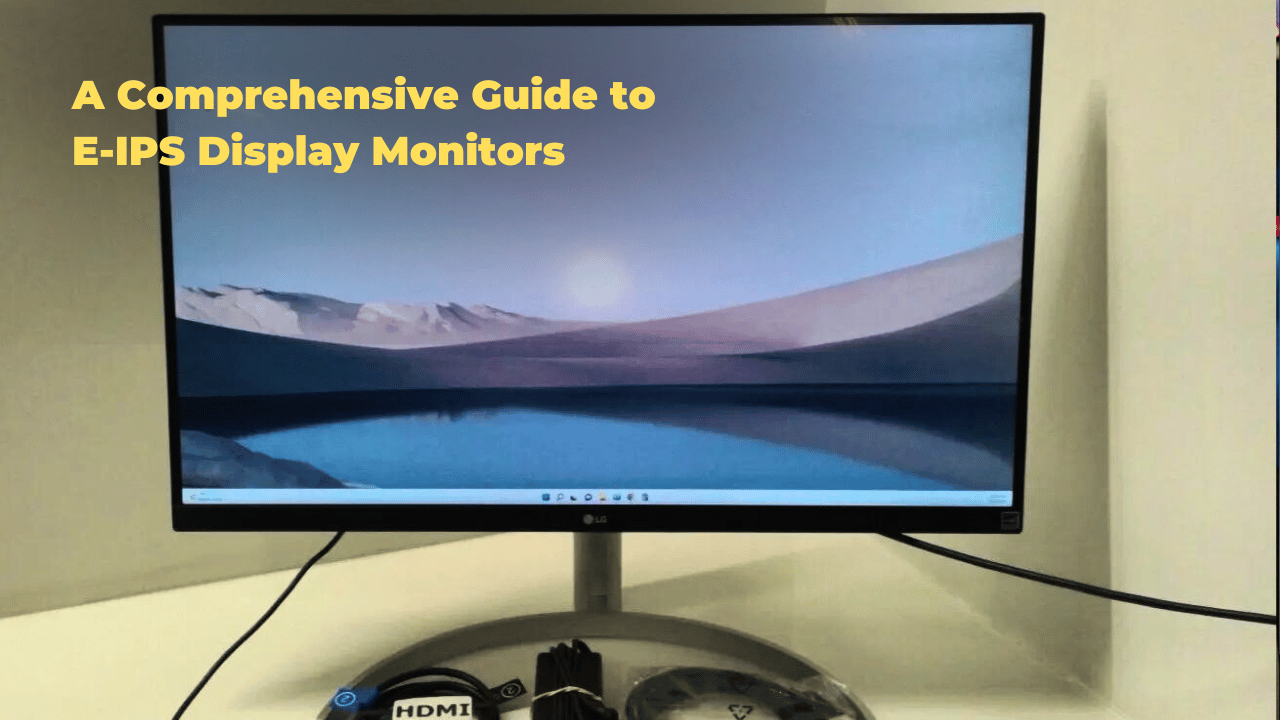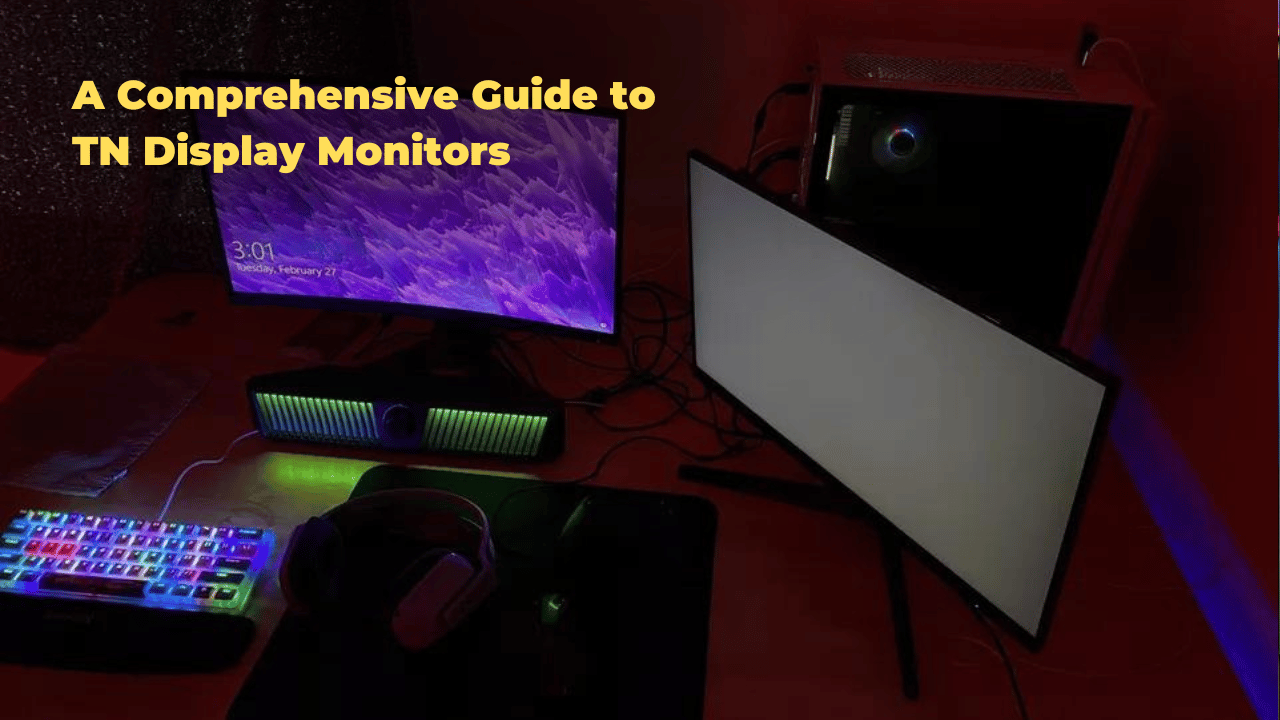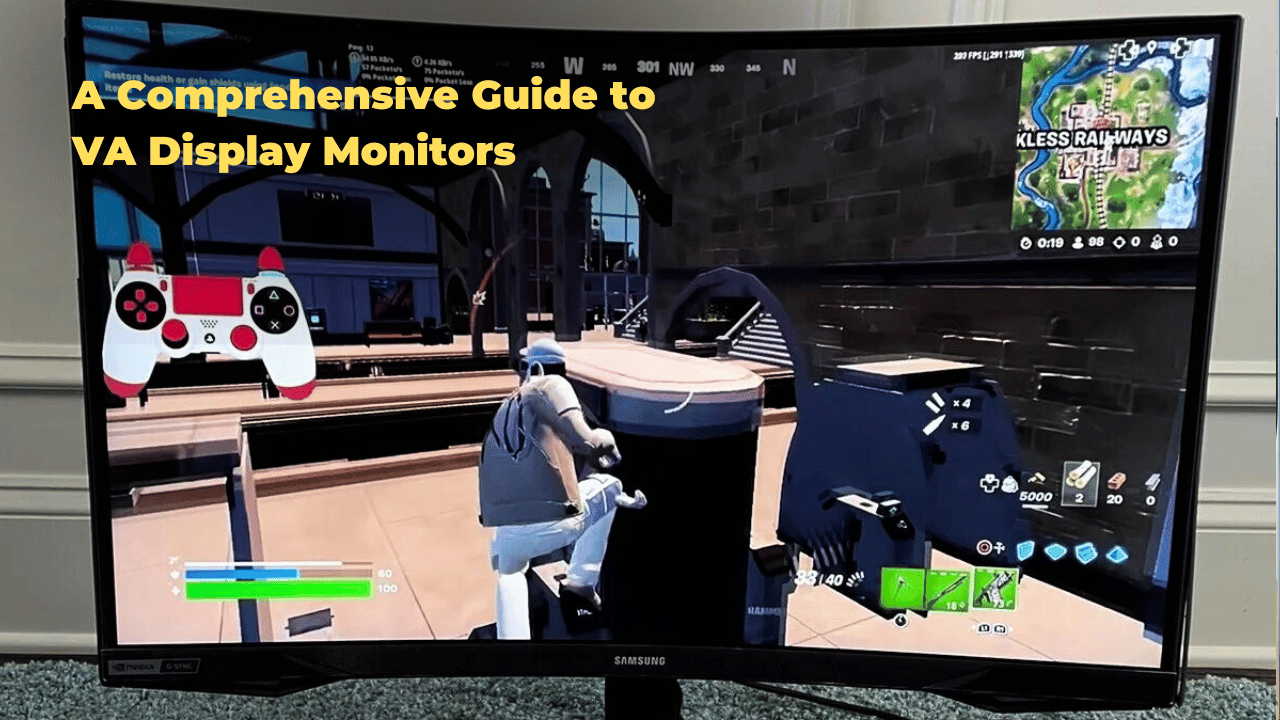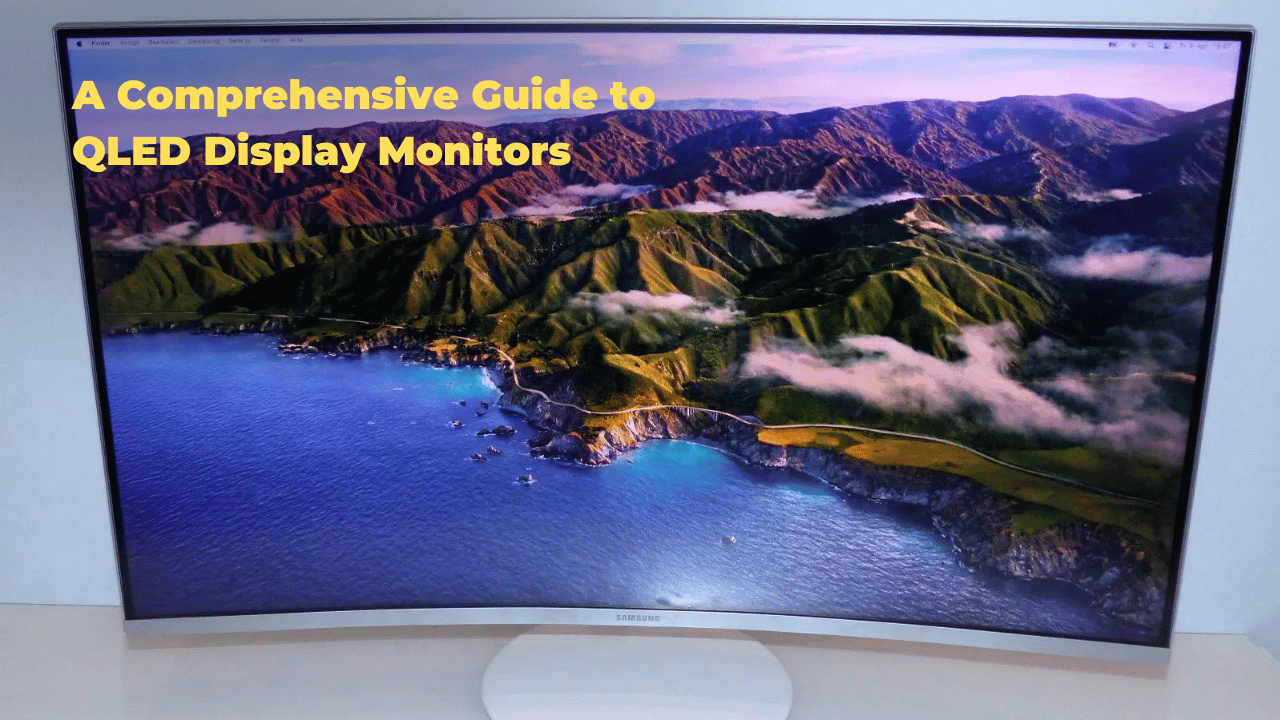LED display monitors offer superior image quality, faster response times, and reduced power consumption compared to traditional LCD displays. This technology utilizes a matrix of LEDs, transistors, and pixel formation to produce vibrant colors and high-resolution displays. With advancements in LED manipulation, matrix composition, and transistor regulation, these monitors provide enhanced color accuracy, improved response times, and energy efficiency.
Whether for gaming, professional applications, or everyday use, LED display monitors cater to various needs with their range of features, including refresh rate, response time, and connectivity options. As you explore the intricacies of LED display monitors, you’ll uncover the full potential of this technology.
Key Takeaways
- Monitors with LE2D display: Dell UltraSharp U2720Q, Acer Predator XB273K GS, AOC 24G2U
- Understand LED panel types: Edge-lit, full-array, and mini-LED panels offer varying levels of color accuracy, contrast, and energy efficiency for specific use cases.
- Balance refresh rate, response time, and local dimming: Achieve smooth and competitive gaming performance by finding the right balance between these factors.
- Prioritize color reproduction: Evaluate color gamut and precision with specifications like sRGB, Adobe RGB, and DCI-P3 to ensure accurate color representation.
- Optimize power consumption: Leverage power-saving features, energy-efficient design, and international certifications like Energy Star and EPEAT to reduce energy waste.
- Choose the right LED monitor for gaming: Consider refresh rate, response time, and local dimming to enhance your gaming experience.
- Improve color accuracy: Select an LED monitor with a wide color gamut and high color precision to ensure accurate color representation.
- Reduce eye strain: Opt for an LED monitor with a high refresh rate and fast response time to minimize eye fatigue.
- Enhance productivity: Select an LED monitor with good color reproduction and adequate brightness to improve your work efficiency.
- Consider eco-friendliness: Look for LED monitors with energy-efficient design and international certifications to reduce your carbon footprint.
- Invest in a high-quality LED monitor: Spend time researching and investing in a high-quality LED monitor that meets your specific needs and use cases.
How LED Display Monitors Work
Pixel Matrix Formation
The basic operation of an LED display monitor relies on the precise manipulation of light-emitting diodes, which are strategically arranged to produce a matrix of pixels that collectively form the images displayed on the screen. This matrix is comprised of a vast array of tiny LEDs, each responsible for emitting light of varying intensities to create the desired color and brightness.
LED Control and Transistor Regulation
The LEDs are carefully controlled by an array of transistors, which regulate the flow of electrical current to each diode, thereby modulating the light output. This precise control enables the creation of high-resolution displays with improved color accuracy, faster response times, and increased energy efficiency.
Advantages and Applications of LED Technology
The advent of LED technology advancements has enabled the development of high-dynamic-range (HDR) displays, which offer a more immersive viewing experience. These advancements have also paved the way for future applications in fields such as virtual reality, augmented reality, and biomedical imaging.
Evolution of LED Technology and Future Applications
As LED technology continues to evolve, we can expect to see further improvements in display quality, energy efficiency, and cost-effectiveness. The potential applications of LED display technology are vast, and ongoing research and development are likely to reveal new and innovative uses for this technology in the years to come.
Key Benefits of LED Display Technology
| Benefit | Description |
|---|---|
| Improved Color Accuracy | Enhanced color representation for a more realistic viewing experience |
| Faster Response Times | Reduced motion blur and improved image clarity |
| Increased Energy Efficiency | Lower power consumption for reduced energy costs and environmental impact |
Types of LED Panels Explained
LED display monitors use different types of LED panels, each with unique characteristics, advantages, and applications.
Edge-Lit Panels: Budget-Friendly and Slim Designs
Edge-lit panels, the most common type, use LEDs along the edges of the screen to illuminate the LCD layer. They offer:
- Slim design
- Low power consumption
- Cost-effectiveness
- Suitable for general use and budget-friendly options
Full-Array Panels: Professional-Grade Color Accuracy
Full-array panels feature LEDs distributed across the entire back of the screen, providing:
- Better contrast
- Color accuracy
- Wider viewing angles
- Ideal for professional applications, gaming, and video editing, where precise color representation is essential
Mini-LED Panels: The Best of Both Worlds
Mini-LED panels, a newer technology, combine the benefits of edge-lit and full-array panels, offering:
- Improved contrast
- Color accuracy
- Thinner design
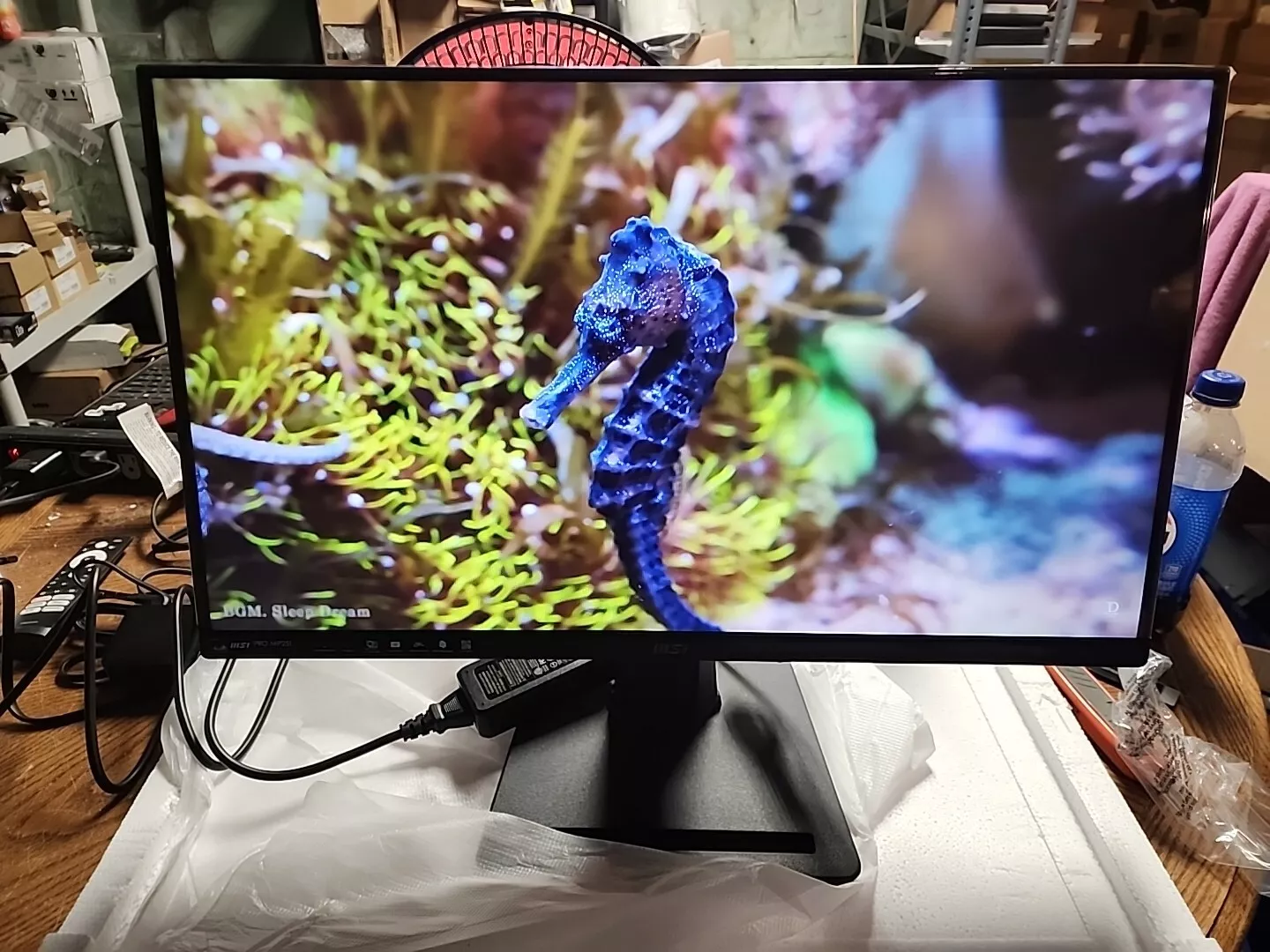
Key Considerations for Choosing an LED Display Monitor
When selecting an LED display monitor, consider the following factors:
Pixel Pitch and Panel Size
- A lower pixel pitch indicates a higher pixel density, resulting in sharper images
- Panel size and mounting options, including VESA mounts and adjustable stands, affect the overall ergonomic design and flexibility of the monitor
Bezel Design and Immersive Viewing
- Thinner bezels provide a more immersive viewing experience
Making an Informed Decision
By understanding the differences between LED panel types and considering these key factors, users can choose the best LED display monitor for their specific needs.
Refresh Rate and Response Time
Understanding Refresh Rate for Smooth Gameplay
An LED display monitor’s refresh rate, measured in Hertz (Hz), significantly affects gaming performance. A higher refresh rate, such as 144Hz or 240Hz, ensures smoother motion and reduces screen tearing, making it ideal for fast-paced games. In contrast, a lower refresh rate, like 60Hz, may cause noticeable lag and blur.
The Importance of Response Time in Gaming
Response time, typically measured in milliseconds (ms), is the time it takes for a pixel to change its color. A faster response time, usually 5ms or lower, reduces blur and ghosting, resulting in sharper and more detailed images. This is particularly important for gamers who need quick and precise reactions.
Balancing Refresh Rate and Response Time for Competitive Gaming
When selecting an LED display monitor, it’s crucial to consider both refresh rate and response time. A monitor with a high refresh rate and fast response time will provide a smooth and immersive gaming experience. By reducing blur and motion artifacts, these specifications enable gamers to react quickly and accurately, giving them a competitive advantage.
Gaming Performance Comparison: Refresh Rate and Response Time
| Refresh Rate | Response Time | Gaming Experience |
|---|---|---|
| 60Hz | 10ms | Noticeable lag and blur |
| 144Hz | 5ms | Smooth motion, reduced screen tearing |
| 240Hz | 1ms | Fast and precise reactions, competitive edge |
Choosing the Right Monitor for Your Gaming Needs
For those looking for the best gaming performance, a monitor with a high refresh rate and fast response time is a necessity. By understanding the importance of refresh rate and response time, gamers can make informed decisions when selecting an LED display monitor, gaining a competitive edge in their gaming experiences.
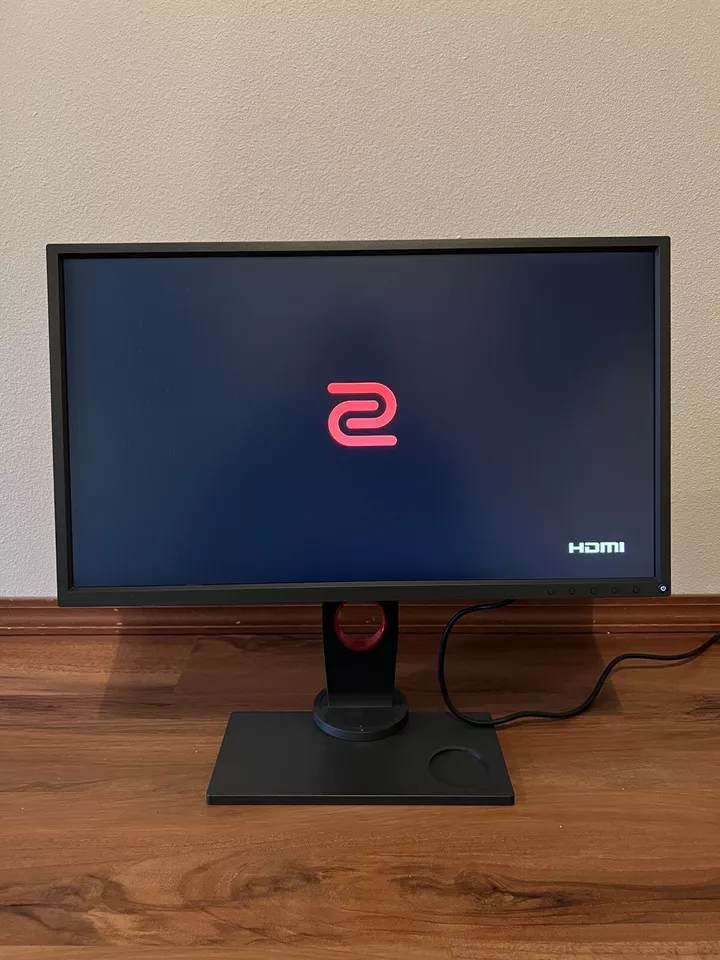
LED Backlighting and Local Dimming
Revolutionizing Display Technology
LED backlighting has transformed the display industry by offering superior brightness, energy efficiency, and a thinner design compared to traditional CCFL (Cold Cathode Fluorescent Lamp) backlights.
Understanding LED Backlight Technology
The LED backlight technology consists of an array of light-emitting diodes (LEDs) located along the edges or behind the panel, which illuminates the LCD panel to produce images.
The Benefits of Local Dimming
One of the key benefits of LED backlighting is its ability to facilitate local dimming, a feature that enables different areas of the screen to be dimmed or brightened independently. This results in improved contrast, deeper blacks, and a more immersive viewing experience.
Local Dimming Techniques
Local dimming can be achieved through various techniques, including:
| Technique | Description |
|---|---|
| Edge-lit Local Dimming | LEDs are located along the edges of the screen |
| Full-array Local Dimming | LEDs are distributed across the entire back of the screen |
| Micro-dimming | LEDs are grouped into small zones for precise control |
Dynamic Contrast for Enhanced Color Accuracy
Dynamic contrast, a feature that adjusts the backlight’s brightness based on the content being displayed, is also made possible by LED backlighting. This allows for a more accurate representation of colors and a more engaging visual experience.
Color Gamut and Color Accuracy
Understanding Color Gamut and Color Accuracy
Beyond brightness and contrast, a display monitor’s true measure of expertise lies in its ability to accurately reproduce a wide range of colors. This is where color gamut and color precision come into play.
Color Gamut: The Range of Colors
Color gamut refers to the range of colors a monitor can display, with a wider gamut indicating a more vibrant and true-to-life color representation. A monitor with a wider color gamut can display more nuanced and subtle color shifts, making it ideal for:
- Graphic designers
- Photographers
- Videographers
Color Precision: The Accuracy of Colors
Color precision, on the other hand, measures how closely the monitor’s displayed colors match the intended colors. This is often measured using color calibration, which involves adjusting the monitor’s settings to guarantee that the displayed colors are accurate and consistent. A monitor with high color precision is essential for:
- Graphic designers
- Photographers
Viewing Angles and Color Precision
Viewing angles also play an essential role in color precision, as a monitor’s color representation can shift when viewed from different angles. A monitor with good viewing angles will maintain its color precision even when viewed from the side, making it ideal for:
- Collaborative work
- Presentations
Evaluating Color Gamut and Color Precision
When evaluating a display monitor’s color gamut and color precision, look for specifications such as:
| Color Space | Description |
|---|---|
| sRGB | Standard RGB color space for web and digital media |
| Adobe RGB | Wide color gamut for graphic design and photography |
| DCI-P3 | Cinema-grade color gamut for film and video production |
By considering these factors, you can guarantee that your display monitor provides the most accurate and vibrant color representation possible.
Resolution and Aspect Ratio Options
Display Resolution Explained
Display monitors come in a variety of resolutions, each tailored to specific tasks and user preferences. The resolution of a monitor indicates the number of pixels it can show, with higher resolutions providing crisper and more intricate images. Common resolutions comprise HD (1280×720), Full HD (1920×1080), Quad HD (2560×1440), and 4K (3840×2160).
Aspect Ratio: The Shape of Your Screen
On the other hand, aspect ratio pertains to the relationship between the width and height of the monitor. The most prevalent aspect ratios are 16:9, 16:10, and 4:3. A 16:9 aspect ratio is perfect for viewing movies and gaming, while a 16:10 aspect ratio is more suitable for tasks that require productivity.
Resolution and Aspect Ratio Breakdown
| Resolution | Aspect Ratio | Usual Screen Size | Pricing Options |
|---|---|---|---|
| HD | 16:9 | 22-24 inches | Economical ($100-$200) |
| Full HD | 16:9 | 24-27 inches | Moderate ($200-$400) |
| Quad HD | 16:9 | 27-32 inches | Top-tier ($400-$800) |
| 4K | 16:9 | 32 inches and above | Luxury ($800-$1,500) |
Choosing the Right Monitor for Your Needs
When selecting a monitor, it is crucial to take into account the tasks you will be using it for and your budget. If you are a gamer or a movie buff, a higher resolution and 16:9 aspect ratio might be the optimal choice. Conversely, if you are searching for a monitor for productivity tasks, a lower resolution and 16:10 aspect ratio may be more appropriate.
Tips for Selecting the Perfect Monitor
- Consider your budget and the tasks you will be using the monitor for
- Weigh the benefits of higher resolutions and aspect ratios
- Research different monitor options to find the best fit for your needs
Connectivity and Compatibility Options
Wired Connectivity: HDMI vs DisplayPort
When selecting an LED display monitor, understanding the differences between HDMI and DisplayPort is crucial. HDMI (High-Definition Multimedia Interface) supports high-definition video and audio signals, while DisplayPort offers higher bandwidth and can support multiple monitors from a single connection. For instance, DisplayPort 1.4 can support up to 5K resolution at 60Hz. While HDMI is more commonly found on consumer electronics, DisplayPort is gaining popularity in professional and gaming sectors.
Wireless Connectivity Options for Enhanced Flexibility
In addition to wired connectivity, modern LED display monitors often feature wireless connectivity options, including Wi-Fi, Bluetooth, and proprietary wireless technologies developed by manufacturers. These wireless connectivity options provide users with greater flexibility and convenience, allowing them to connect their devices without the clutter of cables. Some monitors even offer wireless charging capabilities, further enhancing the overall user experience.
Ensuring Seamless Integration and Compatibility
When choosing an LED display monitor, it is essential to consider the range of connectivity and compatibility options available. By doing so, users can ensure smooth integration with their devices and enjoy an excellent viewing experience. This includes considering the types of devices to be connected, the desired resolution and refresh rate, and the level of flexibility required.
Key Connectivity Options Comparison
| Connectivity Option | Description | Resolution Support | Multi-Monitor Support |
|---|---|---|---|
| HDMI | High-Definition Multimedia Interface | Up to 4K at 60Hz | Limited |
| DisplayPort | High-bandwidth interface | Up to 5K at 60Hz | Yes |
| Wi-Fi | Wireless connectivity | Varies | N/A |
| Bluetooth | Wireless connectivity | Varies | N/A |
Addressing User Concerns
Some users may be concerned about the reliability and stability of wireless connectivity options. However, many modern LED display monitors feature advanced wireless technologies that provide fast and stable connections. Additionally, users can always opt for wired connectivity options for critical applications.
LED Monitor Power Consumption
Energy Efficiency Standards for LED Displays
Enhancing power consumption is crucial when selecting an LED display monitor, as it can greatly impact energy costs and environmental sustainability over the device’s lifespan. LED monitors are designed to be energy-efficient, but there can be significant variations in power consumption between different models.
Factors Affecting Power Consumption
When evaluating an LED monitor’s power consumption, consider the following factors:
| Factor | Impact on Power Consumption |
|---|---|
| Brightness | Higher brightness settings consume more power |
| Resolution | Higher resolutions (e.g., 4K, QHD) consume more power |
| Panel Type | Different panel types (IPS, VA, TN) have varying levels of energy efficiency |
Power Saving Features for LED Monitors
Look for monitors with power saving features, such as:
- Automatic brightness adjustment
- Dynamic contrast ratio
- Energy-efficient panel types (e.g., IPS, VA)
These features can help reduce energy consumption and minimize environmental impact.
International Energy Efficiency Certifications
To ensure energy efficiency, look for LED monitors that meet international energy efficiency standards, such as:
- Energy Star: A program run by the U.S. Environmental Protection Agency that certifies energy-efficient products
- EPEAT: A global rating system that evaluates electronic products based on their environmental impact
These certifications guarantee that the monitor meets certain energy efficiency criteria, providing assurance that it will consume less power while maintaining peak performance.
Key Features for Specific Uses
Optimizing Monitor Features for Specific Use Cases
A monitor’s intended use greatly influences the key features needed, as different applications require distinct capabilities to guarantee an optimal viewing experience.
Gaming and Fast-Paced Entertainment: Minimizing Motion Blur and Ghosting
For an immersive gaming experience, look for monitors with:
| Feature | Recommended Specification |
|---|---|
| Refresh Rate | 144Hz or higher |
| Response Time | 5ms or lower |
| Input Lag | Low input lag |
| Anti-Tearing Technology | G-Sync or FreeSync |
Professional and Creative Applications: Precise Color Representation
For graphic design, photography, and video editing, prioritize monitors with:
| Feature | Recommended Specification |
|---|---|
| Color Accuracy | High color accuracy |
| Color Gamut | Wide color gamut |
| Contrast Ratio | High contrast ratio |
| Resolution | 4K resolution |
| HDR Support | HDR support |
Home and Office Use: Balancing Price and Convenience
For general use, consider monitors with:
| Feature | Recommended Specification |
|---|---|
| Price Range | Suitable price range |
| Eco-Friendliness | Eco-friendly options |
| Design Aesthetics | Design aesthetics that suit your workspace |
| Convenience Features | Built-in speakers, USB ports, and adjustable stands |
Key LED Monitor Specifications
| Feature | Description | Importance |
|---|---|---|
| Panel Type | IPS, VA, TN | Affects viewing angles, color accuracy, and response time |
| Resolution | Full HD (1920×1080), QHD (2560×1440), UHD (3840×2160) | Determines image sharpness and detail |
| Refresh Rate | Measured in Hz (hertz) | Higher refresh rates offer smoother visuals, especially for gaming |
| Response Time | Measured in milliseconds (ms) | Lower response time reduces ghosting and blurring |
| Contrast Ratio | Ratio of brightest white to darkest black | Higher contrast provides deeper blacks and brighter whites |
| Brightness | Measured in nits | Determines how bright the monitor can get |
| Screen Size | Measured diagonally in inches | Choose a size that suits your viewing distance and needs |
| Connectivity Options | HDMI, DisplayPort, USB-C | Ensures compatibility with your devices |
Frequently Asked Questions
Can I Use an LED Monitor in a Bright or Sunny Environment?
‘When using an LED monitor in bright or sunny environments, outdoor use can be challenging due to glare. To mitigate this, look for monitors with glare reduction features, such as anti-reflective coatings or high-contrast ratios, to guarantee best visibility.’
How Do I Clean an LED Monitor to Avoid Damaging It?
To clean an LED monitor safely, employ proper maintenance by using gentle cleaning techniques, such as microfiber cloths and distilled water, avoiding harsh chemicals, abrasive materials, and excessive moisture to prevent damage to the display.
Are LED Monitors Suitable for Gaming Consoles Like Playstation?
“Fasten your seatbelts, gamers! LED monitors are an excellent match for gaming consoles like PlayStation, boasting minimal input lag and high refresh rates, ensuring a seamless, immersive experience with lightning-fast responsiveness.”
Can I Wall-Mount an LED Monitor, and if So, How?
Most LED monitors are wall-mountable, but compatibility and installation process vary. Confirm the monitor’s VESA mount pattern matches the wall mount’s compatibility. Follow safety provision, such as weight capacity and secure fastening, to avoid damage or injury.
Do LED Monitors Come With a Built-In Speaker System?
The sweet sound of silence – because, surprisingly, not all LED monitors come with built-in speakers. Those that do often compromise on audio quality, but offer space-saving aesthetics and convenient connectivity options.
Conclusion
In conclusion, choosing the perfect LED display monitor involves considering factors such as panel type, refresh rate, response time, color gamut, and connectivity options. By understanding these key features, users can find an LED monitor that meets their specific needs, whether it’s for gaming, graphic design, or home entertainment. Share with us your experience with LED display monitors and what features matter most to you in the comments below!


